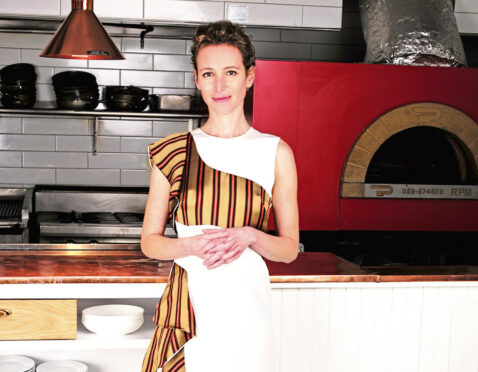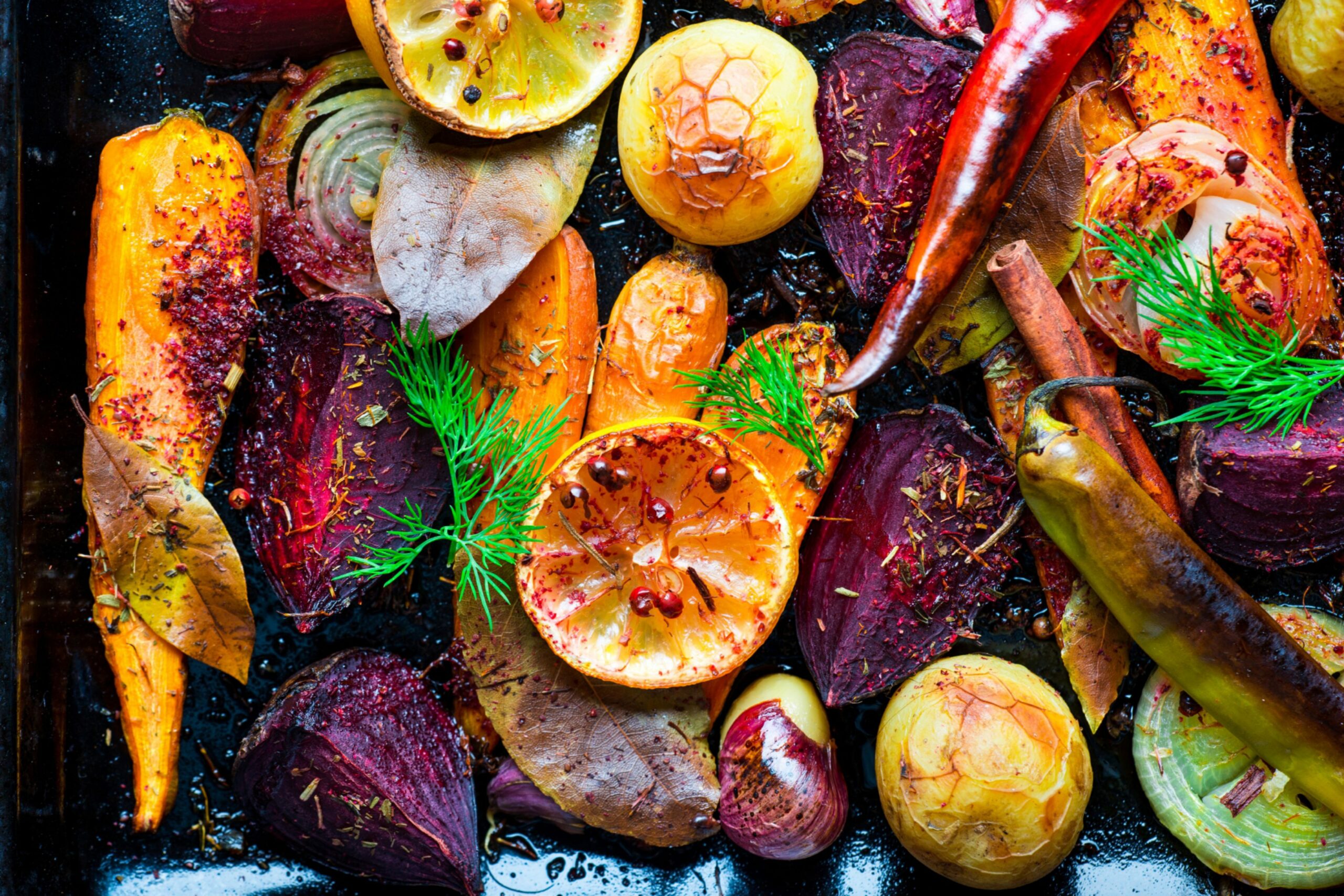
Tamar Adler has a very simple food philosophy; cooking and eating should be affordable, responsible and, most importantly, pleasurable.
Having learned from her mother, a talented yet thrifty cook, and later working in busy professional kitchens, the award-winning writer believes cooking should be less about a list of ingredients, trendy dishes and eye-catching plating techniques, and more focused on a way of thinking that puts “economy and grace” at the heart of every meal.
Yes, Michelin Star eateries and the latest best-selling cookbook may be considered, by some, the pinnacle of good food – but in the Adler household, where nothing is wasted and satisfaction is paramount, perfection is never the goal.
“I feel like the entire cookery industry, not always knowingly or with malice, preys on the cook’s insecurities,” she explained on a Zoom call from her dining table in Hudson, New York. “It sets up professional cooks in high-stress environments, where they have to make the most incredible dishes. I get stressed out even thinking about it.
“If I was given a sardine, a duck breast and 25 minutes, I don’t think I’d be excited about cooking. It bears no resemblance at all to what feeding oneself and one’s family has always been about. That is an entirely different challenge – it’s about how do I turn the available materials around me from their inedible form to their edible form? And how do I do it in a way that is enjoyable for everybody around me and not wasting of resources? That is the function of cooking.”
Feeding hunger and cravings, and making the most of every ingredient, are the lessons Adler shares in her practical cooking guide, An Everlasting Meal, which was published in the UK for the first time last week.
Bringing together advice on everything from what to do when cooking feels like a chore to transforming leftovers into delicious meals, frugality is a running theme, and one which Adler admits has been increasingly relevant since the first edition was published 10 years ago.
She said: “When I wrote An Everlasting Meal, it was right after the 2008 crash. That was a moment when a lot of people were out of work, when everybody graduated from college and couldn’t get a job, and there was this sense of pending global financial collapse.
“I chose then to write the book because all these things kept coming out about ‘how to eat your freezer’, and how we feed ourselves with less money in this big wake-up moment.”
Although now, she admits, the economic struggles both at home and abroad are not the only concern – over the past decade, we have become more aware of our impact on the planet, with dwindling resources making no-waste cooking and eating all the more important.
She continued: “It’s cyclical, but it should be relevant all the time because even if we have more resources to expand, we just shouldn’t be. We’re missing our climate goals as it is and, you know, we’re in trouble. Using fewer resources is better for the planet.
“We were already in that crisis before the cost of living crisis – but it’s much more visible and poignant when something used to cost two pounds is now five pounds.”
Adler’s wittily entitled chapters include tips for planning in advance (How To Stride Ahead), the many wonders of cooking with rice (How To Make Peace), and what to do when you’ve burnt dinner and feel compelled to throw the entire pan into the bin (How to Snatch Victories from the Jaws of Defeat).
“If something is burning, just taste it,” Adler said with a laugh. “Then you can decide whether it’s fine – and it usually is. Unless you’ve told everyone that you’ve made the internet famous hasselback potatoes, no one is coming to your house for that.
“When you burn the potatoes, scoop out the insides and make a frittata. It doesn’t matter. We didn’t survive as a human race because we threw out food that didn’t go according to plan.”
It is this fact, Adler is keen to impress, that proves her way of cooking is not new or innovative. It is the way money-minded parents and grandparents fed their families before convenience took over – a way that combines economy and enjoyment. “So much of the best cooking in the world relies on the dual principles of economy and pleasure,” explained Adler, who is a contributing editor to Vogue magazine.
“The two cannot be separated. When you look at provincial French food and cucina povera in Italy, all of the amazing south-east Asian foods, it’s always those two things.
“For example, I lived in Bangkok for a little while and there was this one street food vendor who made this squash curry with cubes of pig blood in it – it’s better than it sounds! It was delicious, totally savoury, and a speciality you could only get it at her stand. People didn’t start cooking with pig’s blood because they were, like, living high on the hog. They had to see what was nourishing and, most of the time, given how long humans have been around, they also found ways of making incredible dishes out of all of these things.”
After all, when taking the cost out of cooking, you don’t need to also remove the flavour or excitement. To think and cook like a chef – all the wisest know the best meals rely on the ends of the meals that came before them – we simply need a different mindset and no constraints, Adler said.
And she has taken her love of “summoning respectable meals from the humblest ingredients” one step further with her new cookbook, coming in March next year, which boasts more than 1,500 recipes but no shopping list. “The entire thing is recipes for leftovers,” she explained.
“Everything that you have is an ingredient. For example, there are no recipes for eggplant [aubergine], there’s just ‘eggplant cooked’ or ‘eggplant old’. It’s a tome of a book that treats every single edible or, you know, marginally edible thing, as an ingredient on par with an heirloom tomato.”
She added: “A lot of the ‘cook like a chef’ models don’t make you sovereign in the kitchen because you’re imitating somebody else. You don’t need to be anybody other than who you are, even if you’re new to cooking. I want people to take back control of their kitchens, always with agency, power, sovereignty, self-sufficiency, and confidence.”
An Everlasting Meal: Cooking With Economy And Grace is available now.
‘Put skins, bones and stems into the pot not into the bin’
Our desire to eat fresh vegetables has left us with the idea that vegetables are only good if they’re cooked just before being eaten. But many of the best vegetable dishes are created over time. Each week, I buy whole bunches of the leafiest, stemmiest vegetables I can find.
Then I scrub off their dirt, trim off their leaves, cut off their stems, peel what needs peeling, and cook them at all once. I like to roast vegetables – I can fill my oven once and create a week’s worth of healthy, delicious ingredients. Oversalted pasta should be saved, mixed with unsalted butter and a lot of fresh herbs, like parsley, rosemary and marjoram, and made into a pasta frittata. Remember not to salt the eggs.
The skins from onions, green tops from leeks, stems from herbs must all be swept directly into a pot instead of into the garbage. Along with the bones from a chicken, raw or cooked, they are what it takes to make chicken stock, which you need never buy once you decide to keep its ingredients instead of throwing them away. If you have the bones from fish, it’s fish stock. If there are bones from pork or lamb, you will have pork or lamb stock.
Tail ends of loaves of bread are as good as their heads, and perhaps more useful. Warm olive oil, add a sliced garlic clove and a finely sliced leek, cook them slowly for a few minutes, add four cups of cubed crustless stale bread, two cups of any meat broth, two cups of any combination brothy portions and let it cook into a thick, unrecognisable, delicious soup.
Parsley leaves stay good picked off their steam and stored in a closed container for weeks. All the rest of the herbs stay good for longest when kept whole and dry, side by side in single layers in paper towels. Stack layers in a roasting pan and wrap tightly in plastic.

Enjoy the convenience of having The Sunday Post delivered as a digital ePaper straight to your smartphone, tablet or computer.
Subscribe for only £5.49 a month and enjoy all the benefits of the printed paper as a digital replica.
Subscribe © Shutterstock / Dragon_Fly
© Shutterstock / Dragon_Fly